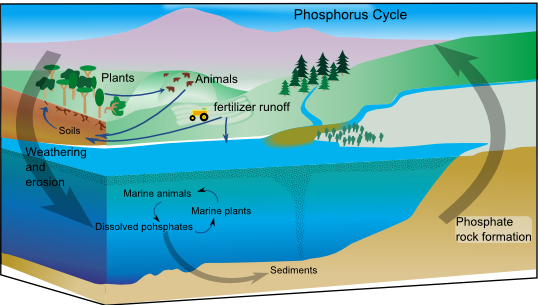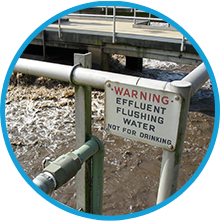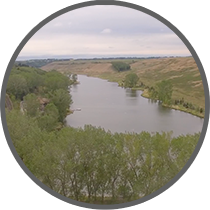Nutrient Loading
At Algae Control Canada, we use proven strategies to deal with high levels of phosphorus and fixed nitrogen that can lead to heavy algae blooms and weed growth. Algae and aquatic plants thrive in nutrient-rich conditions – to be effective in solving these problems water managers must address nutrient load.
Aeration and bioaugmentation can mitigate fixed nitrogen (ammonia, nitrites, and nitrates). Phosphorus (phosphates) is more challenging to mitigate because it does not enter the atmosphere. Once phosphorus enters a lake or pond, it continually leaches upward out of the sediments. This action results in increasing available phosphorus for plants and algae that live in the water column. Human activity has drastically increased the rate at which phosphorus has accumulated in our lakes, ponds and rivers.
Best Management Practices
Implement watershed best management practices to reduce or eliminate phosphorus from entering the pond via runoff. Examples of this are limiting livestock access to a waterbody, planting native vegetation near the shoreline, or restricting fertilizer use on nearby lawns. These best practices are effective at reducing the rate of new phosphorus accumulation in many circumstances. However, even the most rigorous best management practices are unlikely to reduce elevated, external phosphorus to natural levels. It’s necessary to choose other approaches to deal with high levels of phosphorus load.
Phosphorus Precipitants
There are several substances that will absorb phosphate, immobilizing it and making it biologically unavailable, called phosphorus precipitants. Some of them can effectively lower phosphorus concentrations in lakes, reservoirs and ponds.
Which product to use?
Algae Control Canada has several products that can be easily and safely applied in multiple situations. Some products can be cost-prohibitive for larger applications and we only recommend them for smaller water bodies.
For most ponds, lakes and industrial waterbodies we recommend using aluminum-based products (alum and sodium aluminate) and having our Water Quality Specialists handle the application.
Why alum?
When properly applied, it is an effective, reliable, food-grade product that is affordable and safe. Alum has been used to mitigate phosphorus since the late 1960s. Water managers use it in drinking water treatment facilities worldwide as a clarifier.
Water Column Stripping
Phosphorus precipitants, also called flocculants, can “strip” phosphorus in a water column before it becomes available for absorption by algae or plants. After careful calculation, there is a measured dose of flocculant applied to “strip” the water column. The flocculant absorbs the phosphorus in the water column and precipitates to the bottom.
Phosphorus Interception
Algae Control Canada’s On-Shore Application System “intercepts” external sources of phosphorus (for example, agricultural runoff entering from a ditch or culvert). With this approach, the chemical formulation is injected into the external water source and binds the phosphorus to the alum before it enters the lake, thus inactivating the phosphorus making it unavailable for algal growth.
Phosphorus Inactivation
If there is an accumulated amount of bioavailable phosphorus in the sediments of a water body, it will continually re-enter the water column through natural lake processes, such as “turnover”, “stratification” and through periods of low dissolved oxygen which occur near the bottom of the lake. This phosphorus often leads to toxic algae blooms and green scums on the surface of the lake. A properly calculated dose and application of alum can effectively “inactivate” phosphorus for years or decades.

Equipment barges used to fix phosphorus load in lake sediments, resulting in decreased harmful algal blooms (HABs).
For larger lakes (50 acres or larger) and industrial applications, we offer full comprehensive alum services, including:
- pre-project water quality monitoring,
- algae identification,
- chemical dose determination,
- GPS-guided chemical application,
- alum injection systems to treat storm water/stream water, and
- post-project water quality monitoring and evaluation.
Contact us today and one of our Water Quality Specialists will help you determine which of our phosphorus management products and services are right for you.






